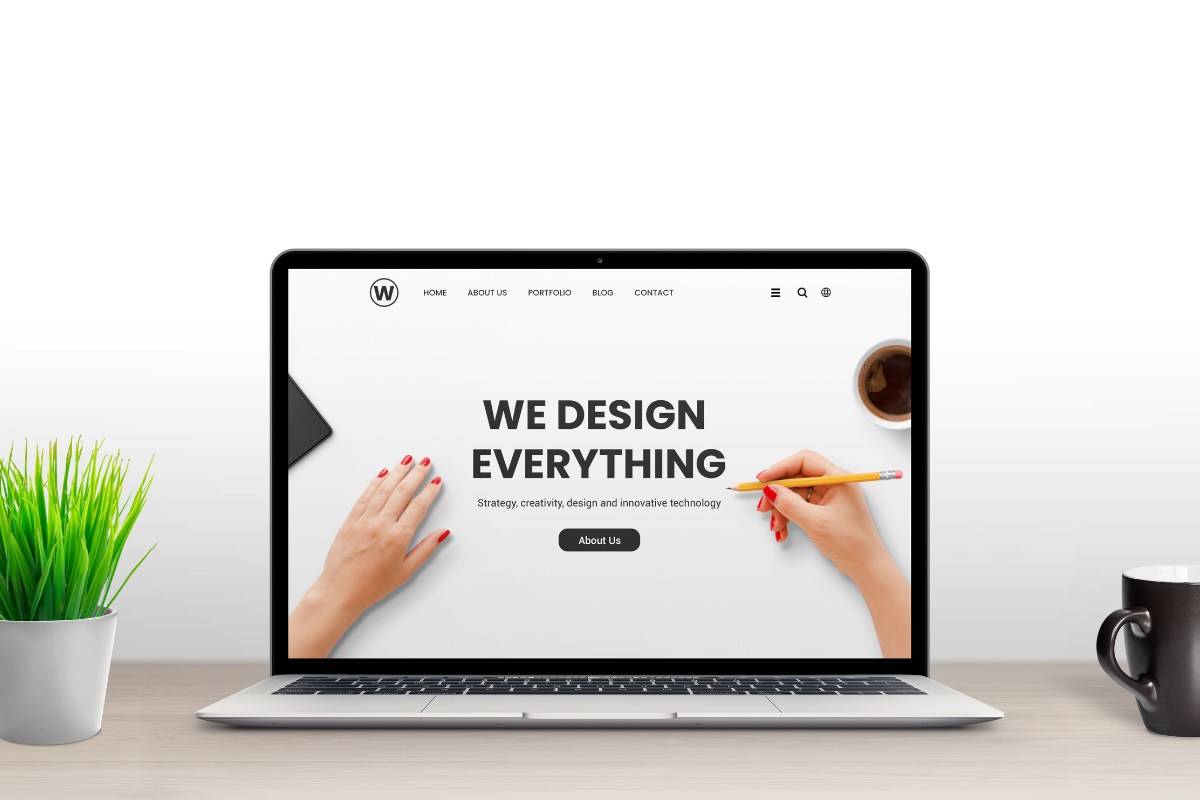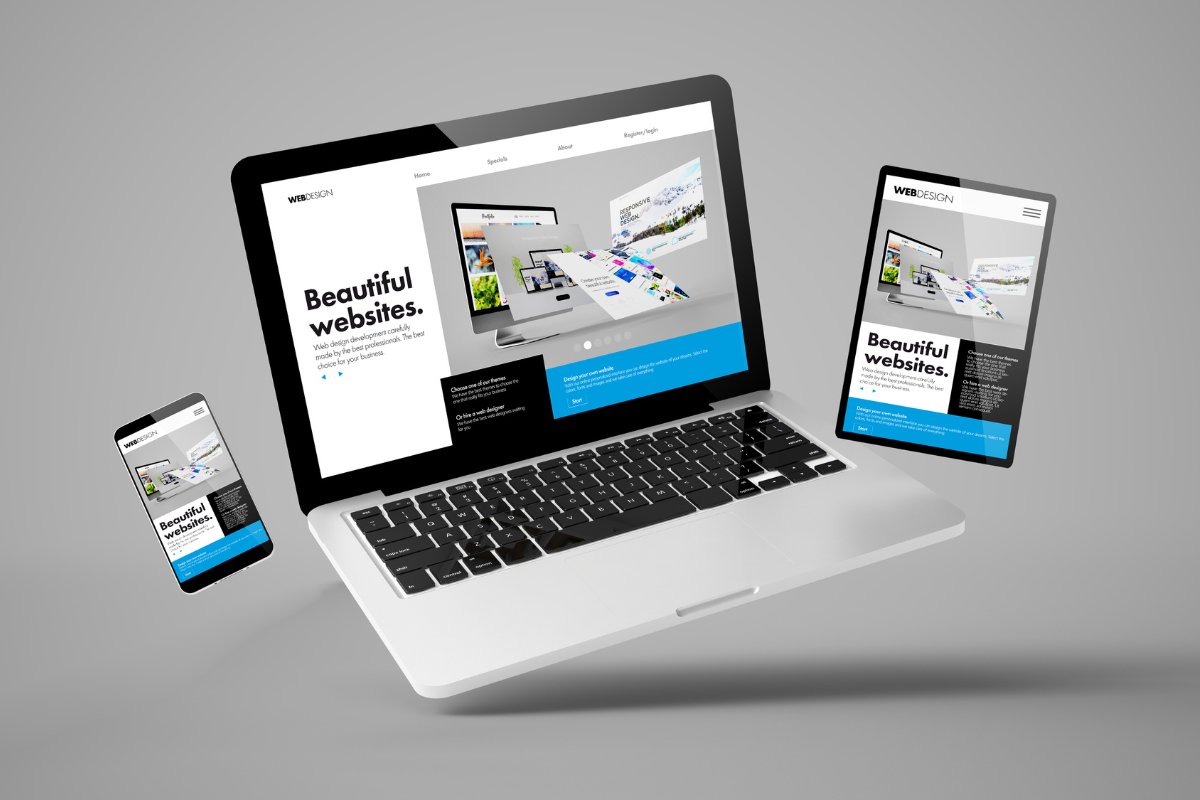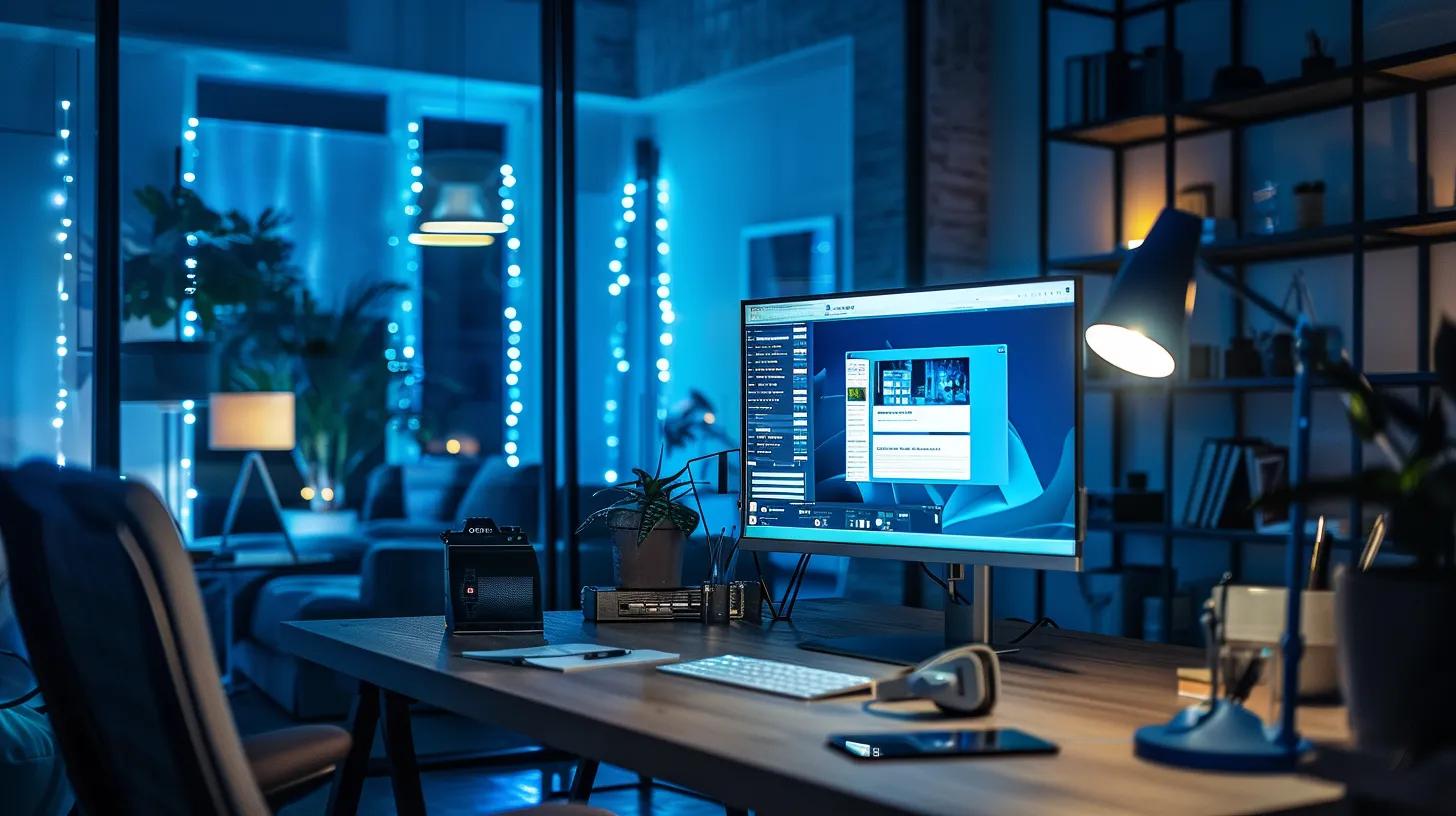In a world where visual noise bombards us at every turn, mastering the art of white space is like discovering an oasis of calm amidst a chaotic storm. So, welcome to the realm where less truly is more – the use of white space in designs.
Unlocking the potential of white space goes beyond mere aesthetics. It’s about understanding the profound impact it has on guiding the viewer’s eye, enhancing readability, and evoking emotions. Whether you’re a seasoned designer or a novice enthusiast, learning how to use white space effectively can elevate your creations from good to exceptional.
Join us on a journey where we delve deep into the art of visual breathing, exploring the subtleties and nuances that transform empty spaces into powerful design elements.
The Secret Ingredient For Stunning Visuals
The Significance Of White Space In Design

White space plays a vital role in design, offering a sense of balance, clarity, and elegance. Discover the true significance of white space and how it transforms your designs into visually captivating experiences.
- Enhances Visual Hierarchy: White space allows elements on a page to stand out, guiding the viewer’s eyes smoothly through the content.
- Improves Readability: Ample white space around text blocks reduces visual clutter, making it easier for readers to consume information.
- Increases Visibility: White space, when strategically employed, can amplify the visibility of essential elements on a page or screen.
- Draws Attention: Placing crucial information within areas of white space naturally draws the readers’ eyes towards those sections.
- Highlights Key Points: When key points are surrounded by white space, they stand out and become more memorable for the viewers.
- Elevates Brand Perception: The strategic use of white space conveys a sense of sophistication and elegance, shaping how audiences perceive a brand or product.
- Fosters Creativity: White space provides breathing room for creative elements to shine, allowing for innovative design solutions.
- Encourages User Interaction: Well-balanced white space around interactive elements on digital interfaces improves user experience and engagement.
- Creates a Sense of Balance: White space helps designers achieve harmonious compositions by balancing visual elements effectively.
- Influences Decision-Making: Utilizing white space intelligently can direct attention and influence user behavior on websites and marketing materials.
Embracing how to use white space in design allows you to create impactful compositions that breathe and engage. By harnessing its potential, you can elevate your designs to new levels of sophistication and effectiveness.
Tips For Using White Space In CSS
Master how to use white space in CSS to enhance the visual appeal and readability of your web designs. These expert tips will help you create clean and organized layouts that leave a lasting impression.
- Understanding the Purpose: White space, or negative space, is crucial in CSS design to enhance readability and focus on elements. Mastering the art of utilizing white space effectively can significantly improve the overall visual appeal of your website.
- Balancing Elements: When implementing white space in CSS, aim for a balance between text, images, and other elements on the page. Proper spacing can create a harmonious layout that guides the user’s eyes to essential content.
- Consistent Margins and Padding: Maintain consistency in margins and padding to ensure a cohesive design. This helps in structuring your content and providing a clean look to the website.
- Whitespace for Emphasis: The strategic use of white space can draw attention to specific elements or sections on a webpage. By incorporating ample space around key content, you can highlight its importance and improve user engagement.
- Responsive Design: Consider white space when designing for different screen sizes. Adapting the spacing to fit various devices ensures a seamless user experience across platforms.
Implement these tips on how to use white space in CSS to take your web designs to the next level. By strategically leveraging white space, you can create a seamless and visually pleasing user experience that engages and delights your visitors.
How To Use White Space To Improve Readability

Unlock the secrets on how to use white space to enhance the readability of your content. Learn how strategic placement and utilization of white space can make your text more legible, inviting, and enjoyable to read.
- Increase Margins: Ensure there is enough white space around the text to prevent overcrowding.
- Paragraph Spacing: Use adequate space between paragraphs to give the content room to breathe.
- Bullet Points: Break down information into bullet points for easy scanning and understanding.
- Subheadings: Use clear subheadings to organize content and guide readers through the text.
- Font Size: Opt for a readable font size to enhance the overall readability of the content.
- Contrast: Create a contrast between text and background to make reading effortless.
- Avoid Clutter: Keep the layout clean and clutter-free to maintain a visually appealing design.
- Visual Elements: Incorporate images or icons strategically to complement the text and improve engagement.
- Consistent Formatting: Maintain consistency in font styles, spacing, and alignment throughout the content.
- Review and Revise: Regularly review the layout to ensure optimal white space utilization for enhanced readability.
By employing effective white space techniques, you can greatly improve the readability of your content, making it easier for readers to absorb information and engage with your message. Enhance the user experience and captivate your audience with well-utilized white space.
How To Use White Space To Create A Visual Hierarchy
Discover the power of white space in creating a visually compelling hierarchy within your designs. Learn how to strategically use white space to guide the viewer’s attention, emphasize key elements, and establish a clear visual hierarchy.
- Balance Content and White Space: Ensure there’s a harmonious mix of content and white space to guide the reader’s eye smoothly.
- Prioritize Important Elements: Use white space around crucial elements like headings, subheadings, and call-to-action buttons to make them stand out.
- Separate Content Into Digestible Chunks: Break down content into smaller paragraphs with ample white space between them for better readability.
- Create Visual Contrast: Contrast sections with varied amounts of white space to create a visual hierarchy and draw attention to key points.
- Avoid Clutter: Resist the urge to fill every inch of space; leave breathing room to let the content shine.
- Focus on Simplicity: Embrace simplicity by using white space effectively to declutter the design and enhance the overall user experience.
- Experiment with Spacing: Play around with different spacing techniques to find what works best for your content and design aesthetic.
- Guide the Reader’s Eye: Direct the reader’s flow by strategically placing white space to lead them from one point to the next seamlessly.
By harnessing the potential of white space, you can effectively structure your designs and create a strong visual hierarchy. Incorporate well-placed white space to guide the viewer’s eye, promote clarity, and enhance the overall impact of your visual compositions.
How White Space Evokes Emotions

Uncover the emotional impact of white space in design. Explore how strategic utilization of white space can evoke a range of powerful emotions, influencing the overall mood and perception of your visual compositions.
- White space allows breathing room for the eyes and mind, promoting a sense of calm.
- It helps in emphasizing key elements on a page, guiding the viewer’s attention effectively.
- Utilizing white space strategically can evoke a feeling of elegance and sophistication in design.
- By incorporating ample white space, a sense of balance and harmony is achieved within the visual composition.
- White space aids in creating a sense of clarity and organization, making content more digestible for the audience.
- When used thoughtfully, white space can evoke a minimalist aesthetic, which can be visually striking.
- The judicious use of white space can convey a sense of luxury and exclusivity in branding and marketing materials.
- Embracing white space in design allows for a refined and polished appearance, elevating the overall visual impact.
- Mastering the art of white space usage is essential for creating visually appealing and emotionally resonant designs.
White space, when used purposefully, can evoke strong emotions within viewers. By harnessing the power of white space, designers can create compelling and emotionally resonant designs that leave a lasting impression.
Types Of White Space And Their Applications
Explore the various types of white space and their versatile applications in design. From macro to micro, discover how these spaces can be strategically utilized to enhance layout, readability, and overall visual balance.
- Active White Space: This type refers to intentional blank areas strategically placed to enhance readability and focus on key elements.
- Passive White Space: In contrast to active white space, passive white space occurs naturally within a design layout. It separates elements and prevents overcrowding.
- Micro White Space: Tiny spaces strategically placed between letters, lines, or elements to enhance legibility and aesthetics fall under this category.
- Macro White Space: Larger empty areas between major design elements help in creating a sense of balance and hierarchy.
- Negative Space: Also known as empty space, negative space is the area around and between design elements. It plays a vital role in shaping the overall composition.
By understanding and effectively employing the different types of white space, designers can craft compositions that exude elegance and professionalism. Embrace the power of white space to create visually pleasing designs that captivate and engage audiences.
Principles Of Using White Space Effectively

Master the principles of using white space effectively to elevate your designs. From balance to emphasis, these key principles will guide you in creating visually harmonious layouts that breathe and engage.
- Purposeful Placement: Ensure white space is strategically positioned around key elements to enhance visual appeal and guide the reader’s focus.
- Balance and Harmony: Maintain a harmonious balance between content and white space to prevent clutter and promote a sense of clarity and organization.
- Enhancing Readability: Proper utilization of white space improves readability by allowing text to breathe and reducing eye strain for the reader.
- Visual Hierarchy: Use white space to create a hierarchy of information, highlighting important content while also providing a structured flow for the reader.
- Aesthetics and Simplicity: Embrace simplicity in design by incorporating ample white space to create a clean, modern look that draws attention to key elements.
- User Experience: White space enhances the user experience by making content more accessible and engaging, leading to increased interaction and retention.
By adhering to the principles of how to use white space effectively, designers can achieve a perfect balance between elements, enhance readability, and create a visual experience that leaves a lasting impact. Embrace these principles to unlock the true potential of white space in your designs.
Tools And Resources For Incorporating White Space
Discover a range of valuable tools and resources that can aid in incorporating white space effectively into your designs. From grid systems to design software, these resources will empower you to create visually stunning and well-balanced compositions.
- White Space Generator Tools: White space plays a crucial role in enhancing visual appeal and readability. Utilize tools like Canva, Adobe Spark, or Whitespace Remover to efficiently incorporate white space in your designs.
- Design Inspiration Websites: Platforms like Dribbble, Behance, and Pinterest offer a plethora of design examples that effectively utilize white space. Draw inspiration from these sources to master the art of visual breathing in your own projects.
- Typography Resources: Choose fonts wisely to create a harmonious balance between text and white space. Websites such as Google Fonts and Adobe Typekit provide a wide range of typography options to elevate your designs.
- Grid Systems: Implement grid systems like Bootstrap or Foundation to structure your layout with adequate white space. These frameworks help maintain consistency and coherence while incorporating ample breathing room in your designs.
- User-Friendly Plugins: For website design, consider using plugins like WP-Optimize or WP Rocket to optimize white space and improve loading times. Streamlining your design elements will ensure a seamless user experience.
By leveraging the right tools and resources while mastering how to use white space, designers can seamlessly integrate white space into their work, resulting in visually impactful designs. Explore these resources to streamline your design process and elevate the use of white space in your projects.
The Hidden Weapon Of Design: Harnessing The Magic Of White Space

Don’t settle for mediocrity when it comes to your web design and development needs. Reach out to Newman Web Solutions and experience the power of white space and other top-notch services. Our team of experts is ready to unlock the true potential of your website, creating visually captivating designs that engage and inspire. From strategic white space utilization to seamless user experiences, we have the expertise to take your online presence to new heights.
Join countless satisfied clients who have already benefited from our innovative approach and let us transform your digital presence into something extraordinary. Don’t miss out! Contact us now to secure your free marketing strategy.






